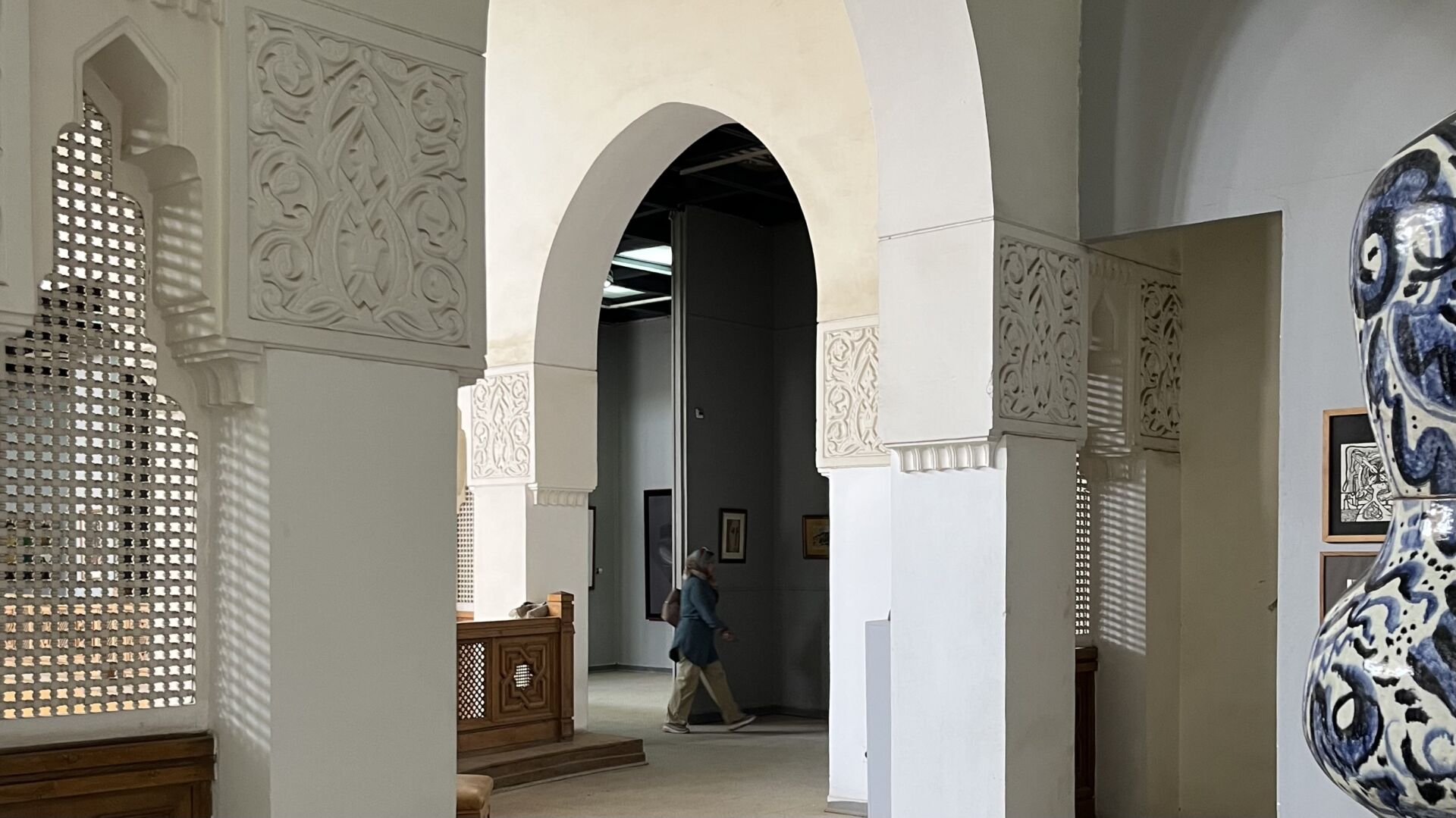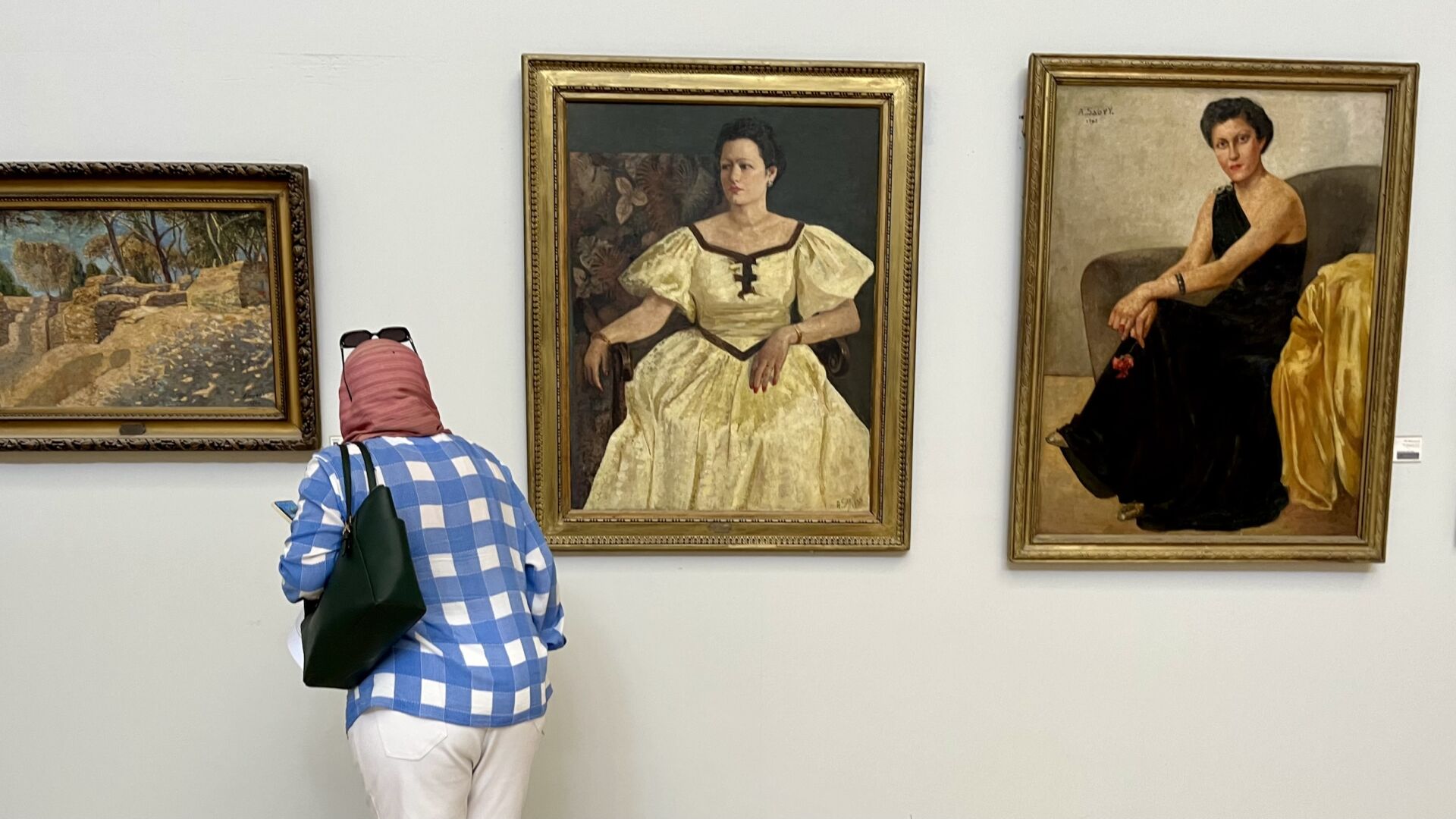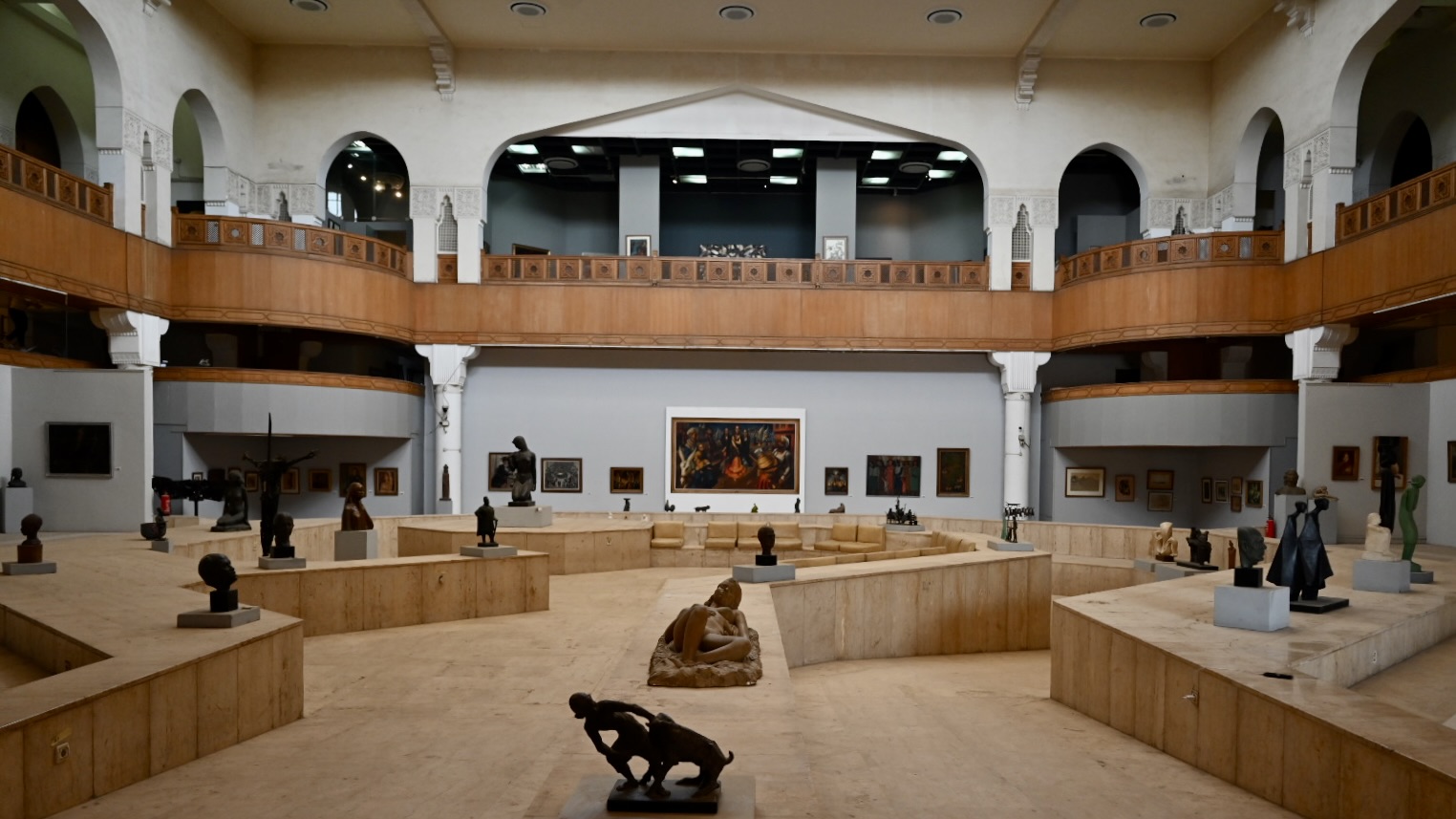Visit and Workshop at the Egyptian Museum of Modern Art
As part of the research project ‘Digital Futures in Museum Practices,’ a group of undergraduate and graduate students from the Faculty of Art Education at Helwan University participated in a workshop led by Susana Vargas. This session focused on the concept of ‘mediation’ and how its interpretation shifts according to context, particularly within museum settings.
The workshop began with an open discussion on mediation, where the students shared their perspectives as emerging art educators. Cultural mediation can be distilled into several key actions: walking, conversing, knowing, observing, and including (Addis, De Stefano, & Guerrisi, 2023). These actions embody a proactive approach that characterises cultural mediation visits, highlighting the importance of the interaction between the speaker and the listener.

Mediation is inherently reciprocal, moving beyond traditional forms of communication in which the expert speaks while the audience passively listens. Instead, the workshop emphasised that mediation fosters a rich dialogue where both the mediator and the audience actively participate. The mediator conveys insights while also engaging with the audience’s thoughts and inquiries, often gaining valuable perspectives about the artworks through these interactions.
The concept of “walking” played a significant role in the workshop, illustrating that the mediator is never static. This dynamic engagement involves interacting not only with visitors but also with the artworks and the surrounding space. Rather than delivering information from a fixed position, the mediator moves around the pieces, encouraging visitors to adjust their perspectives and consider the artworks from various angles. This movement is essential in facilitating a more immersive and engaging experience for the audience.
Mediation also encourages visitors to engage in close observation. The workshop promoted the practice of “slow looking,” urging participants to thoughtfully examine the artworks. This approach allows individuals to interpret the pieces through their own experiences while also incorporating the insights shared by others, enriching their engagement with the art and fostering a deeper understanding of its context and meaning.
Additionally, the workshop underscored the importance of inclusion. Mediation visits are designed to be interactive, integrating both the mediator’s narrative and the visitors’ contributions. This collaborative atmosphere is crucial for making contemporary art accessible, especially given that it can often be challenging to interpret. The workshop also reinforced that mediation visits are open to all audiences without the need for reservations, ensuring broad accessibility.
In the context of museums, the integration of digital transformation is increasingly vital. Museums are adopting new technologies to enhance visitor experiences and expand their reach to broader audiences. To stay relevant in today’s digital landscape, curatorial practices, visitor engagement strategies, and collection management must incorporate technological advancements. The workshop highlighted this aspect by encouraging students to consider how digital platforms, such as social media and virtual tours, can facilitate audience interaction and make cultural experiences accessible to diverse populations, transcending geographic boundaries.

After the introductory discussion, students selected 4-5 artworks from the museum’s collection to facilitate dialogue and develop a mediation process around those pieces. This hands-on activity allowed them to experiment with various strategies aimed at connecting the audience with the art, deepening their comprehension of cultural mediation’s role in contemporary museum practices.
The workshop illustrated the critical role of context in mediation, showing how individual backgrounds, educational experiences, and personal perspectives can shape art interpretation. Additionally, fostering collaborations with technology firms, educational institutions, and cultural organisations emerged as a vital theme, essential for co-creating resources, sharing knowledge, and advancing innovative solutions that enhance museum initiatives.
Furthermore, the workshop addressed the increasing focus on sustainability and inclusion within museums. It highlighted how institutions are striving to minimise their environmental footprint while ensuring diverse perspectives are represented in their digital content. Together, these strategies shape the digital futures of museums, ensuring they remain vibrant and accessible cultural hubs.
Through this workshop, students acquired essential skills that will serve them in their future careers as art educators. They are now better equipped to promote cultural understanding and engagement within their communities, recognising the importance of mediation in making art and culture accessible to all.

References:
Addis, M., De Stefano, I., & Guerrisi, V. (Eds.). (2023). Cultural mediation for museums: Driving audience engagement (1st ed.). Routledge.
Written by Susana Vargas